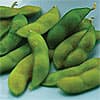
What's Hot
What's Hot
| News flashes are posted here frequently to keep you up-to-date with the latest advances in health and longevity. We have an unparalleled track record of breaking stories about life extension advances.
Vitamin E improves ulcerative colitis in preliminary study
Seyed Amir Mirbagheri and colleagues at the Amir-Alam hospital in Tehran, Iran enrolled 15 volunteers who were receiving treatment with oral drugs for ulcerative colitis. Participants were instructed to administer 8000 international units D-alpha-tocopherol by enema every night for 12 weeks. Endoscopic examination of the colon was performed at the beginning of the study, after the fourth week and at the end of the treatment period. Disease activity was assessed periodically throughout the course of the study. After the second week, disease activity decreased and remained lower for the remainder of the study. All patients showed a significant response to treatment by the study's conclusion, including nine who experienced clinical remission. No worsening of symptoms or serious adverse events occurred. Since oxygen free radicals are believed to play a dominant role in the development of the damage to the mucosa that occurs in ulcerative colitis, vitamin E's antioxidant property is likely a major mechanism involved in the study's findings. The vitamin also has an anti-inflammatory effect, as demonstrated by recent research. "To the best our our knowledge, this is the first data on remission-inducing properties of vitamin E," the authors announce. "This study also confirms the feasibility and acceptability of rectal administration of vitamin E in patients with IBD." "Based on our preliminary results vitamin E might show considerable promise as a new therapeutic modality for IBD," they conclude. —D Dye Flavonoid improves chemotherapy response
University of California Riverside professor of biochemistry Xuan Liu and her assistant Xin Cai discovered that apigenin localizes the tumor suppressor protein p53 in the cell nucleus, which is necessary for the destruction of the cell. Cells normally have low amounts of p53 diffused throughout their nucleus and cytoplasm, and when nuclear DNA is damaged through the use of a chemotherapeutic drug, p53 migrates to the nucleus where it activates genes that halt cell growth and trigger programmed cell death (apoptosis). However, in many cancers, p53 is rendered inactive. "In therapy you want to kill cancer cells," Dr Cai explained. "But to stop cell growth and to kill the cell, p53 first needs to be moved to the cell's nucleus to function. Apigenin is very effective in localizing p53 this way." Apigenin occurs in apples, cherries, grapes, parsley, artichoke, basil, celery, nuts, tea and wine, and has been shown to help inhibit the growth of several types of cancer cells, including breast and colon cancer. "Our study advocates the inclusion of vegetables and fruit in our daily diet to help prevent cancer," Dr Liu recommended. —D Dye CoQ10 levels reduced in Parkinson's brains
The researchers examined tissue samples from the striatum, cerebellum, substantia nigra and cortex of post mortem Parkinson's disease patients and age-matched control patients. Although each of these areas of the Parkinson's disease patients' brains was found to have lower CoQ10 levels than the control brains, only the cortex showed a significant decrease. In their discussion of the findings, the authors note that coenzyme Q10 acts as a lipid soluble antioxidant in addition to its function in mitochondrial electron transport. The oxidative stress that occurs in Parkinson's disease could be a factor in the reduction of CoQ10 observed in this study. "The evidence of decreased brain CoQ10 status identified in this study is therefore consistent with the reported efficacy of CoQ10 supplementation in the retardation of functional deterioration in early state Parkinson's disease," the authors conclude. "However, at present it is uncertain as to what extent this deficit in brain CoQ10 status may contribute to the pathophysiology of Parkinson's disease." —D Dye Green tea compound delays type 1 diabetes in mouse study
The researchers examined tissue samples from the striatum, cerebellum, substantia nigra and cortex of post mortem Parkinson's disease patients and age-matched control patients. Although each of these areas of the Parkinson's disease patients' brains was found to have lower CoQ10 levels than the control brains, only the cortex showed a significant decrease. In their discussion of the findings, the authors note that coenzyme Q10 acts as a lipid soluble antioxidant in addition to its function in mitochondrial electron transport. The oxidative stress that occurs in Parkinson's disease could be a factor in the reduction of CoQ10 observed in this study. "The evidence of decreased brain CoQ10 status identified in this study is therefore consistent with the reported efficacy of CoQ10 supplementation in the retardation of functional deterioration in early state Parkinson's disease," the authors conclude. "However, at present it is uncertain as to what extent this deficit in brain CoQ10 status may contribute to the pathophysiology of Parkinson's disease." —D Dye Vitamin D protective against variety of breast cancers
Kristina M. Blackmore and associates compared 759 women with breast cancer to 1,135 age-matched women without the disease. Four hundred fifty participants had tumors that were estrogen and progesterone receptor positive, 110 cancers were estrogen receptor positive and progesterone receptor negative, and 199 were estrogen and progesterone receptor negative. Telephone interviews were used to obtain information concerning sun exposure history, and vitamin D intake from food and supplements during three time periods relevant to breast tissue growth or change. Increased vitamin intake from both sun exposure and diet was associated with a significantly reduced risk of estrogen and progesterone receptor positive breast cancer. Women whose tumors were estrogen receptor positive and progesterone receptor negative, or estrogen and progesterone receptor negative had comparable associations, although the results were not considered significant in all areas evaluated. Vitamin D supplement use in adolescence and early adulthood was associated with a decreased risk of estrogen and progesterone receptor positive tumors. "The results suggest that vitamin D intake early in life influences breast cancer risk regardless of estrogen receptor/progesterone receptor status," the authors conclude. "Although significant estimates were most consistently found for women with receptor-positive cancers, the largest subgroup, similar nonsignificant and significant associations were at times observed for receptor-negative and mixed tumors. Future studies with a larger number of receptor-negative and mixed tumors are required." —D Dye Lowering arachidonic acid prevents memory loss in mouse model of Alzheimer's disease
"Several different proteins have been implicated in Alzheimer's disease," explained Gladstone Institute Director Lennart Mucke, MD, "but we wanted to know more about the potential involvement of lipids and fatty acids." The team compared brain fatty acid levels in normal mice with levels found in mice bred to produce human amyloid precursor protein, which is expressed in humans with familial Alzheimer's disease. "The most striking change we discovered in the Alzheimer mice was an increase in arachidonic acid and related metabolites in the hippocampus, a memory center that is affected early and severely by Alzheimer's disease," lead author Rene Sanchez-Mejia, MD noted. Fatty acids are taken up by the brain to be incorporated into phopholipids which form the cell membrane. Arachidonic acid is released in the brain from phospholipids by an enzyme known as group IVA phospholipase A2 ( PLA2). By genetically modifying the Alzheimer mice to produce lower levels of PLA2, memory loss and behavioral abnormalities characteristic of Alzheimer's disease were prevented. "Arachidonic acid likely wreaks havoc in the Alzheimer mice by causing too much excitation, which makes neurons sick," Dr. Sanchez-Mejia remarked. "By lowering arachidonic acid levels, we are allowing neurons to function normally," "In general, fatty acid levels can be regulated by diet or drugs," Dr Mucke added. "Our results have important therapeutic implications because they suggest that inhibition of PLA2 activity might help prevent neurological impairments in Alzheimer's disease. But a lot more work needs to be done before this novel therapeutic strategy can be tested in humans." —D Dye Another reason to enjoy chocolate
W. Jeffrey Hurst and colleagues analyzed commercially available cocoa powder, baking chocolate, dark chocolate, semi-sweet baking chips, milk chocolate and chocolate syrup for levels of trans-resveratrol and its glucoside, trans-piceid. They found that cocoa powder contained the highest amount of the compounds, followed by baking chocolates and dark chocolates. Levels of resveratrol per serving for cocoa powder was about half that of the average California red wine, but exceeded that of peanut butter and roasted peanuts. Overall, chocolate products were found to rank second after red wine and grape juice as foods containing the highest amounts of resveratrol. "Cocoa is a highly complex natural food which contains in excess of seven hundred naturally occurring compounds, with many more yet to be discovered," Dr Hurst remarked. "For years, flavanols, a different class of compounds in chocolate, received most of the attention, but these are quite different than resveratrol. It is exciting to see additional antioxidants identified in cocoa and chocolate." "This study shows that the levels of resveratrol found in cocoa and chocolate products is second to red wine among known sources of resveratrol and forms yet another important link between the antioxidants found in cocoa and dark chocolate to other foods," commented David Stuart, PhD, who is Director of Natural Product Science at The Hershey Company who partnered with Planta Analytica in the study. —D Dye Blue light and insufficient antioxidants can add up to advanced age-related macular degeneration
The current study included 4,400 participants in the European Eye Study. Subjects underwent fundus photography to evaluate the presence of macular degeneration, and blood plasma was analyzed for vitamins C and E, the carotenoids lutein and zeaxanthin, and the mineral zinc. Questionnaire responses concerning sunlight exposure were used to estimate blue light exposure from visible light, which has been shown in laboratory studies to contribute to the development of macular degeneration. Early stage macular degeneration was detected in 2,182 participants, and 101 had the advanced form of the disease. The research team, led by Astrid E. Fletcher, PhD, of the London School of Hygiene & Tropical Medicine, found no association between blue light exposure and early macular degeneration, however, among participants whose serum antioxidant levels were among the lowest 25 percent, blue light significantly increased the risk of advanced disease. 'In the absence of cost-effective screening methods to identify people in the population with early AMD, we suggest that recommendations on protecting the eyes, ensuring that diets contain the right nutrients and antioxidants, are targeted at the general population, and especially middle-aged people," Dr Fletcher commented. 'We are not telling people to stay out of the sun altogether," she added. "The benefits of sunlight are well documented, in particular its role in vitamin D synthesis. But if people want to avoid macular degeneration as they get older, they should avoid exposing their eyes to too much sunlight when they are outside, and take simple precautions, such as wearing a wide-brimmed hat and sunglasses." —D Dye Ginkgo extract helps prevent stroke damage in animal model
Associate professor in the Department of Anesthesiology and Critical Care Medicine, Sylvain Doré, PhD, and associates gave 100 milligrams per day of the ginkgo extract EGb 761 or an inert substance to mice for seven days before inducing stroke by blocking the middle cerebral artery. The researchers used normal mice as well as a strain that lack the gene that produces heme oxygenase-1 (HO-1), which has been shown to have an antioxidant effect as well as help protect against inflammation. Tests of brain function and damage 1, 2 and 22 hours post-stroke revealed that pretreatment with ginkgo reduced neurologic dysfunction and damaged areas by approximately half compared to untreated mice, however, this effect was not seen in mice lacking HO-1. In other experiments, ginkgo was shown to elevate HO-1 levels, thereby increasing antioxidant activity to reduce free radical damage in the stroke-affected regions of the brain. "It's still a large leap from rodent brains to human brains but these results strongly suggest that further research into the protective effects of ginkgo is warranted," Dr Doré commented. "If further work confirms what we've seen, we could theoretically recommend a daily regimen of ginkgo to people at high risk of stroke as a preventive measure against brain damage." "Ginkgo has long been touted for its positive effects on the brain and is even prescribed in Europe and Asia for memory loss," he stated. "Now we have a possible understanding for how ginkgo actually works to protect neurons from damage." —D Dye Vitamin D essential for whole body health
Dr Norman includes bone marrow, breast, colon, intestine, kidney, lung, prostate, retina, skin, stomach and the uterus as organs for which vitamin D has been found to be essential. He notes that vitamin D, while well recognized as playing a role in bone health, has the potential to contribute in five areas in which researchers have documented new actions for the vitamin through its receptor: the adaptive and innate immune systems, the secretion and regulation of insulin by the pancreas, heart and blood pressure regulation, muscle strength, and brain activity. Additionally, having adequate vitamin D levels appears to reduce the risk of some cancers. "It is becoming increasingly clear to researchers in the field that vitamin D is strongly linked to several diseases," stated Dr Norman. "Its biological sphere of influence is much broader than we originally thought. The nutritional guidelines for vitamin D intake must be carefully reevaluated to determine the adequate intake, balancing sunlight exposure with dietary intake, to achieve good health by involving all 36 target organs." Dr Norman recommends that all adults acquire 2000 international units (IU) per day: an amount that is higher than the recommended daily intake. "Ideally, to achieve the widest frequency of good health by population, we need to have 90 percent of the people with adequate amounts of vitamin D,” he stated. "There needs to be a sea change by various governmental agencies in terms of the advice they present to citizens about how much vitamin D should be taken." —D Dye Vitamin D supplements protect skin against infection
A research team led by Richard Gallo, MD, PhD, who is a professor of medicine and chief of the Division of Dermatology at the UCSD School of Medicine and the Dermatology section of the Veterans Affairs San Diego Healthcare System, gave 4,000 international units vitamin D per day to 14 subjects with atopic dermatitis and 14 participants without the condition. Serum vitamin D and calcium levels were measured, and biopsies of the affected areas were performed at the beginning of the study and at the end of the 21 day treatment period. Although elevated serum calcium is a concern with treatment with high amounts of vitamin D, participants' levels were actually lower by the end of the study. Skin from subjects who received vitamin D showed an increase in a peptide called cathelicidin which helps protect against invasion by microbes. Reduced levels of cathelicidin have been associated with an increased amount of infection in eczema patients. "These results suggest that supplementation with oral vitamin D dramatically induces cathelicidin production in the skin of patients with atopic dermatitis," stated coauthor Tissa R. Hata, MD. "It also slightly elevated its production in normal skin in this study." "Larger studies examining the incidence and risks of infections in atopic subjects while on vitamin D supplementation, and supplementation for a longer duration, will be necessary in the future to see if this increase in cathelicidin is adequate in the prevention of infections in these patients," the authors recommend. —D Dye Omega-3 fatty acids improve infant development
Assistant Professor Emily Oken and her associates evaluated data from 25,446 children born to mothers who were participants in the Danish Birth Cohort, which enrolled pregnant women between 1997 and 2002. During the sixth month of their pregnancies, the women completed dietary questionnaires concerning their prenatal diets, which included information on the type and amount of fish consumed. Interviews concerning breastfeeding and child development markers, such as the ability to sit unsupported or use word-like sounds, were conducted 6 and 18 months following delivery. Children of mothers whose fish intake during their pregnancies was among the top 20 percent of participants were 25 percent likelier to have children with better cognitive and motor skills at 6 months, and 29 percent likelier at 18 months, compared with those who consumed the least amount of fish. Women who breastfed their infants for at least 10 months also had children who demonstrated improved development, particularly at 18 months, which was attributed to breast milk's high omega-3 fatty acid content. "These results, together with findings from other studies of women in the U.S. and the United Kingdom, provide additional evidence that moderate maternal fish intake during pregnancy does not harm child development and may on balance be beneficial," Dr Oken concluded. "Women should continue to eat fish - especially during pregnancy - but should choose fish types likely to be lower in mercury." —D Dye Prostate cancer cell culture experiments support selenium and vitamin E combination treatment
For the current study, Nihal Ahmad, PhD and colleagues added varying concentrations of alpha-tocopherol succinate (vitamin E), a form of selenium known as methylselenic acid, or both nutrients to three human prostate cancer cell lines as well as normal prostate epithelial cells. While vitamin E succinate or selenium alone modestly inhibited the growth and viability of prostate cancer cells, the combination of the two dramatically inhibited prostate cancer cell growth while having no effect on either growth or viability of normal cells. The scientists determined that the nutrients' mechanism involves proteins that are members of the Bcl-2 family, which participate in the control of apoptosis. Apoptosis occurred in all cell lines used in the study, two of which were androgen-insensitive and defective for p53. The finding is important because prostate cancer undergoes a transition from androgen-sensitive to androgen-insensitive disease, and most prostate cancers contain both types of cells. "We have found that the combination of vitamin E succinate and methylselenic acid was much more effective than either of the agents alone," the authors conclude. "Also, we have used low concentrations of both the agents which makes our finding more relevant to in vivo [living] settings." —D Dye Soy isoflavones reduce C-reactive protein, endothelial dysfunction
In a randomized, double-blinded trial, 102 patients previously diagnosed with ischemic stroke were given an 80 milligram soy isoflavone supplement or a placebo for 12 weeks. Flow-mediated dilatation of the brachial artery, which assesses endothelial function by measuring the ability of the arteries to dilate following a period of impaired circulation, was evaluated on all participants at the beginning of the study and at the end of the treatment period. Fasting blood samples were analyzed for lipids, high-sensitivity C-reactive protein (CRP), markers of oxidative stress, and other factors. Among subjects who received isoflavones, flow-mediated dilatation was significantly greater than the placebo group after 12 weeks. Although both groups experienced a similar degree of impaired flow-mediated dilatation at the beginning of the study, the prevalence of impairment after 12 weeks was reduced from 82 to 58 percent of the participants who received isoflavones. A greater effect was observed in past and current smokers, and nondiabetic subjects. While other blood parameters remained relatively unchanged at the end of the treatment period, C-reactive protein levels decreased significantly in the isoflavone group. C-reactive protein levels were lower in patients whose flow-mediated dilatation impairment had normalized by the end of the study, suggesting that reduction of vascular inflammation is a mechanism of isoflavones in improving endothelial function. "These findings may have important implications for the use of isoflavone for secondary prevention in patients with cardiovascular disease, on top of conventional cardiovascular interventions," the authors conclude. —D Dye |

 An article published in the October 21, 2008 issue of the
An article published in the October 21, 2008 issue of the  An article published online on October 24, 2008 in the
An article published online on October 24, 2008 in the  In an article scheduled for publication in
In an article scheduled for publication in  In an article scheduled for publication in
In an article scheduled for publication in  The October 15, 2008 issue of the
The October 15, 2008 issue of the  An article published online on October 19, 2008 in the journal
An article published online on October 19, 2008 in the journal  The September 24, 2008 issue of the
The September 24, 2008 issue of the  The October, 2008 issue of the journal
The October, 2008 issue of the journal  An article published online on October 9, 2008 in the journal
An article published online on October 9, 2008 in the journal  The August, 2008 issue of the
The August, 2008 issue of the  The October, 2008 issue of the
The October, 2008 issue of the  Researchers at Harvard Medical School and Harvard Pilgrim Health Care, and the Maternal Nutrition Group from the Department of Epidemiology at Statens Serum Institut in Copenhagen, Denmark, report in the September, 2008 issue of the
Researchers at Harvard Medical School and Harvard Pilgrim Health Care, and the Maternal Nutrition Group from the Department of Epidemiology at Statens Serum Institut in Copenhagen, Denmark, report in the September, 2008 issue of the  In the November 1, 2008 issue of
In the November 1, 2008 issue of  An article published online on September 23, 2008 in the
An article published online on September 23, 2008 in the 